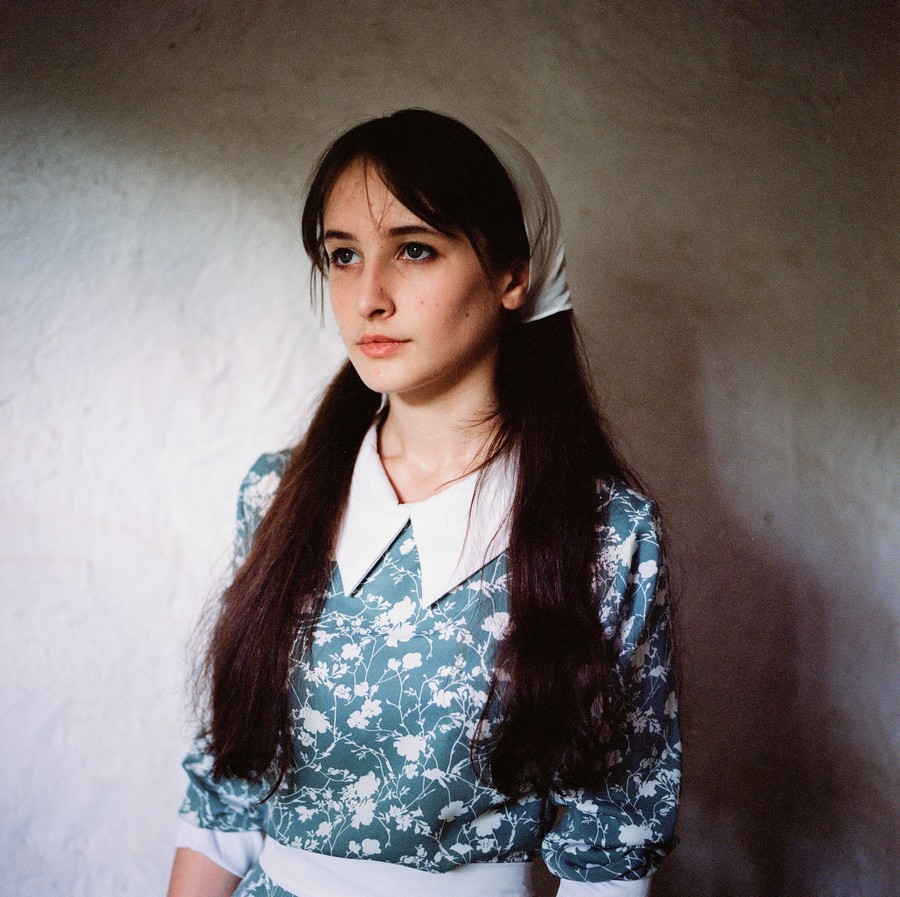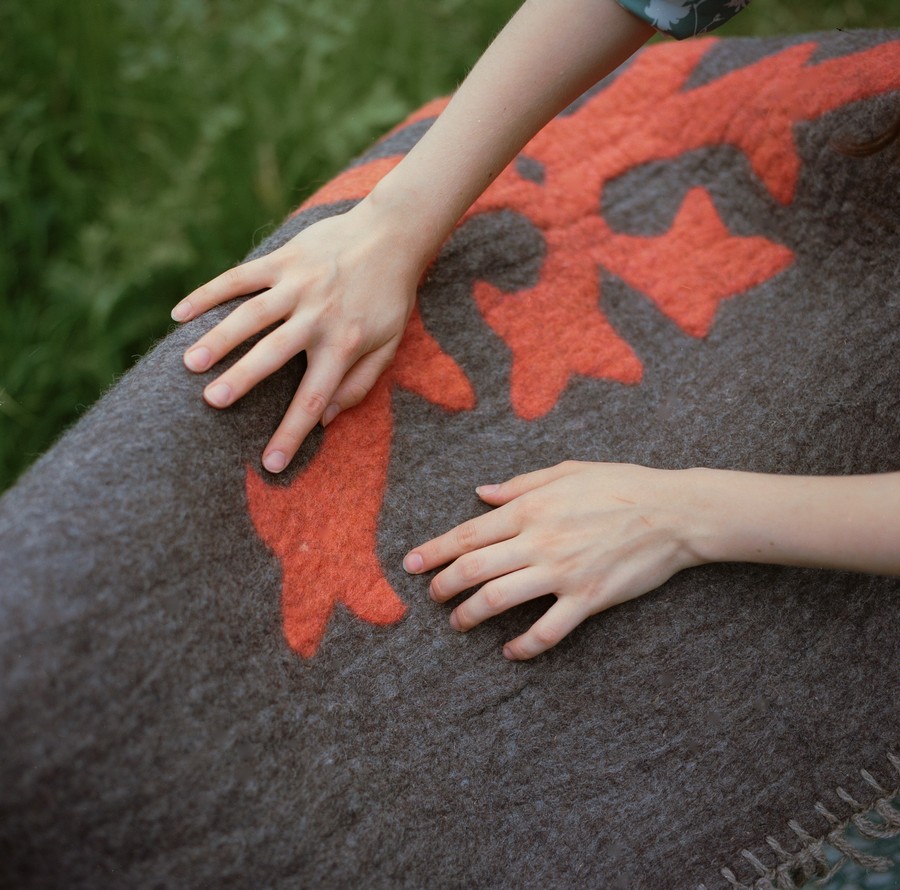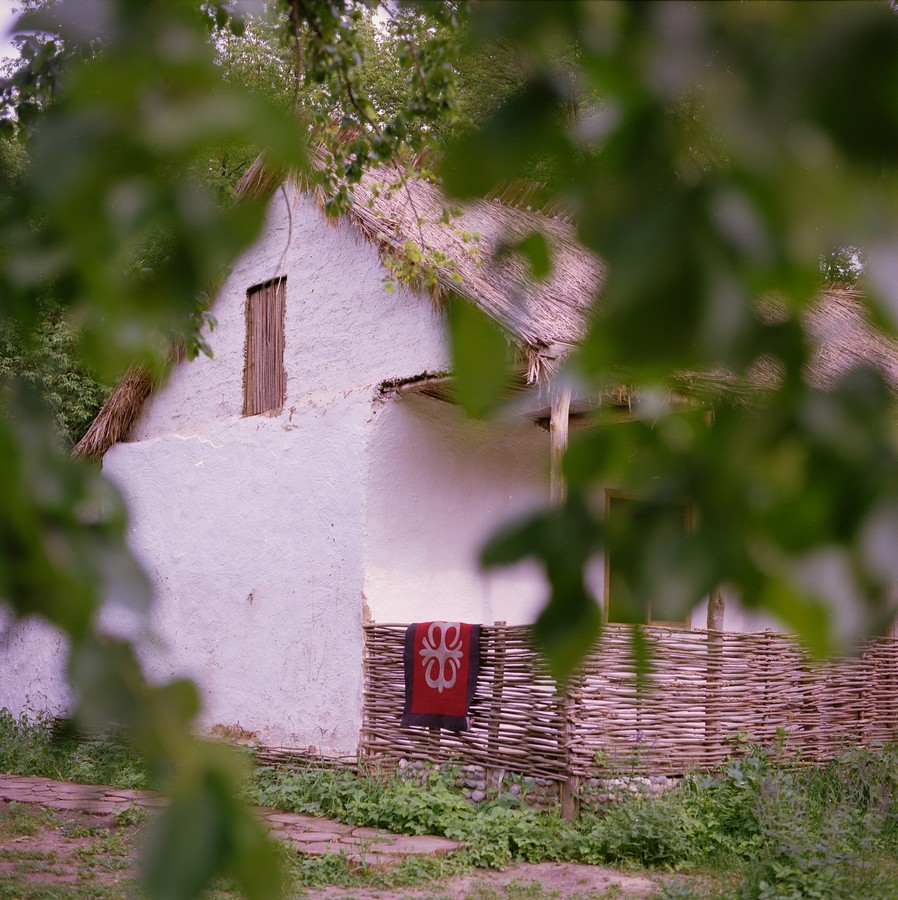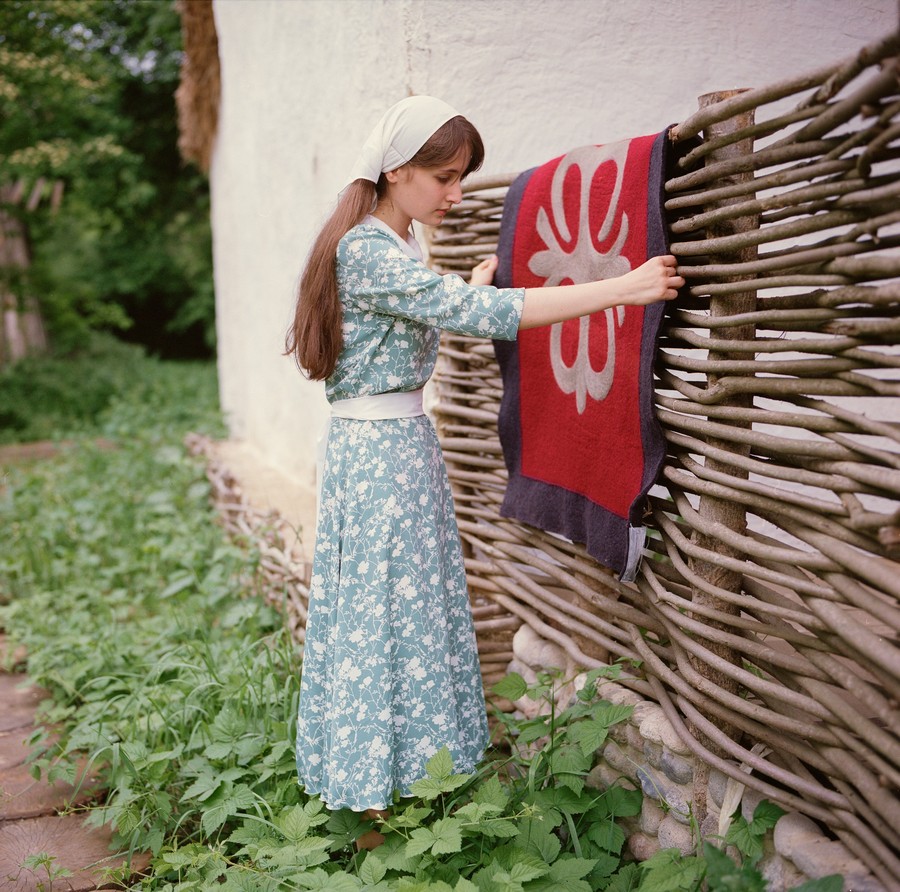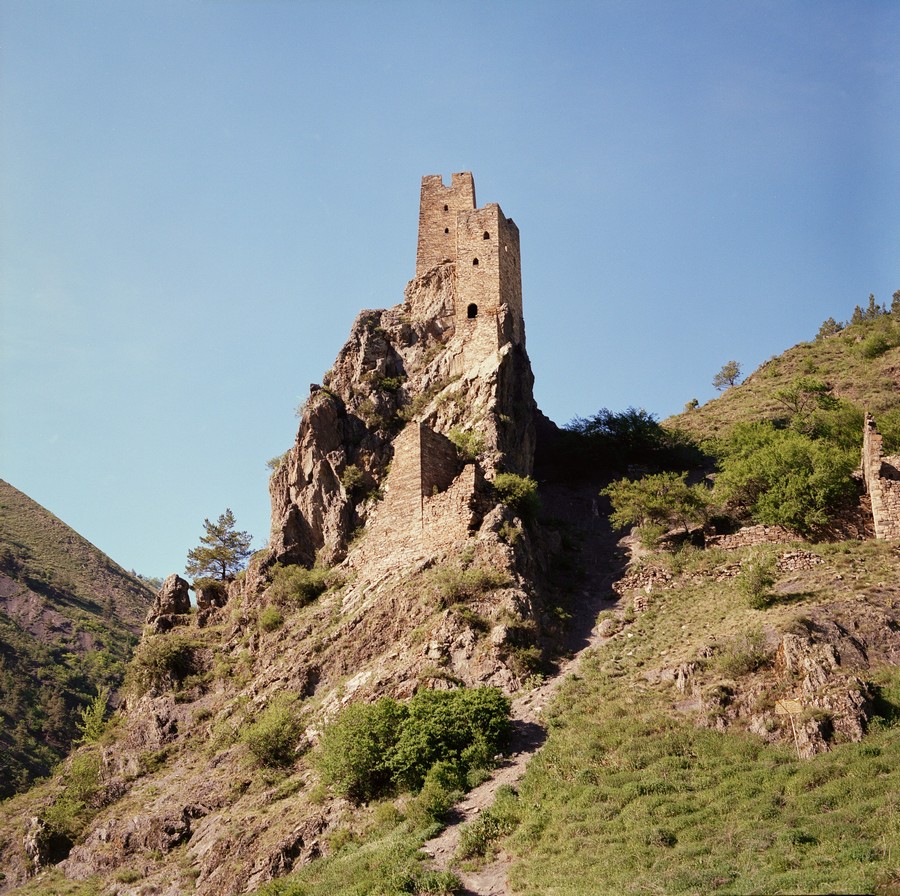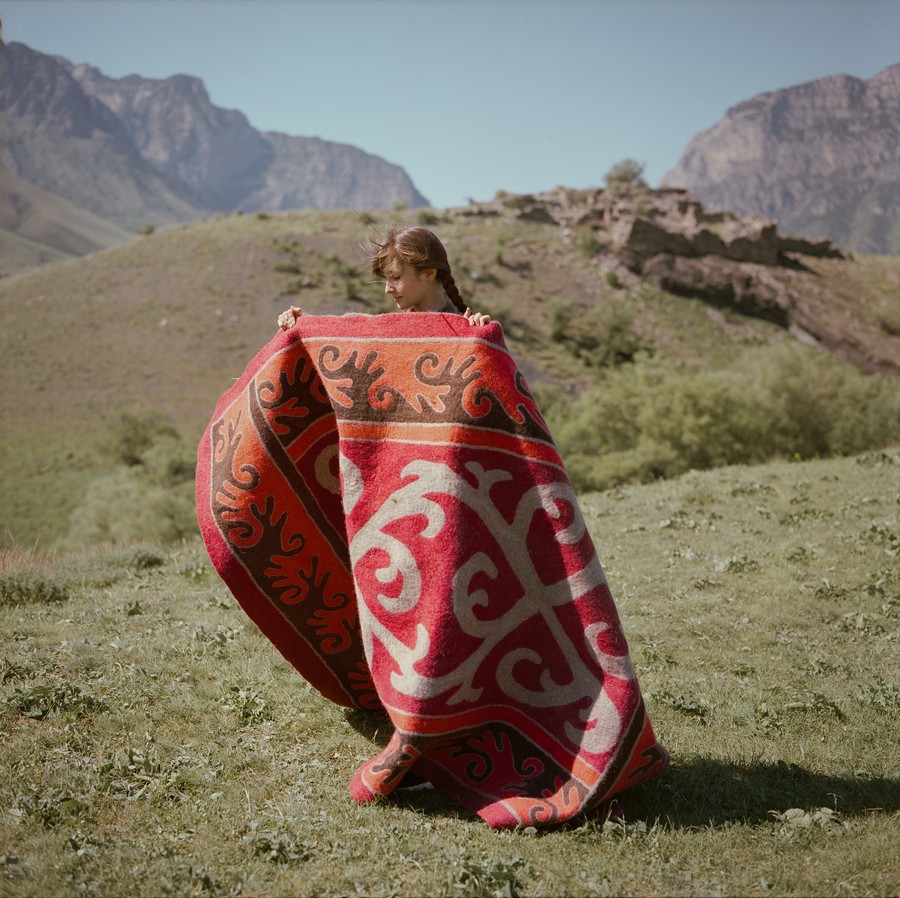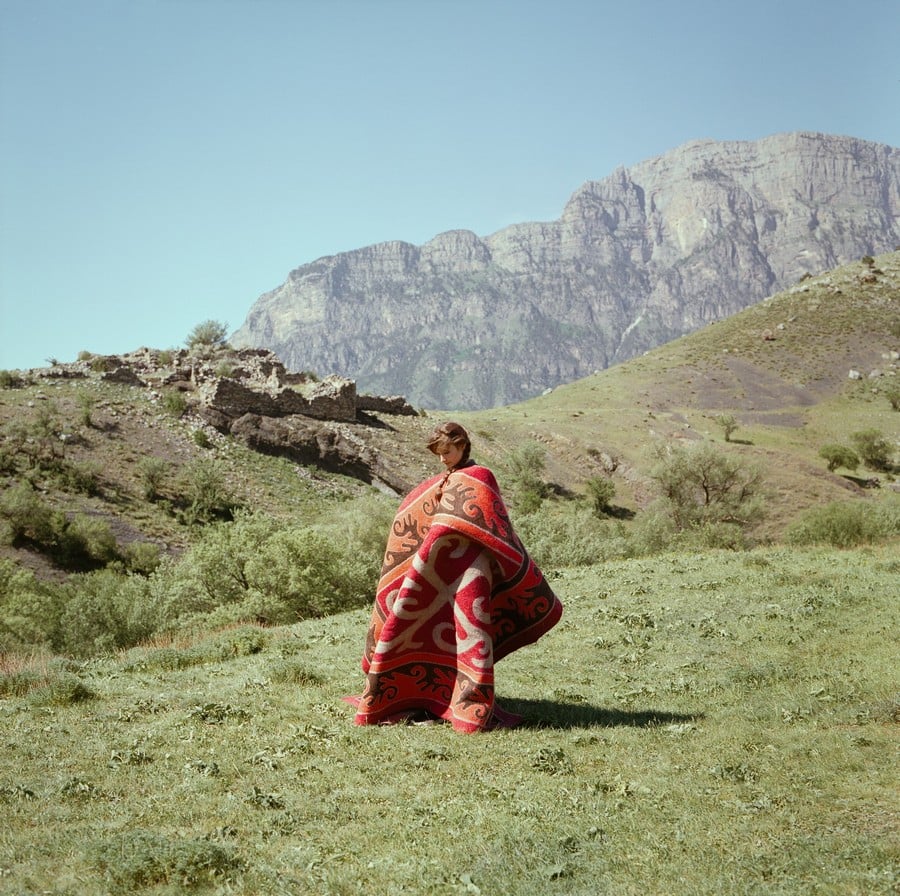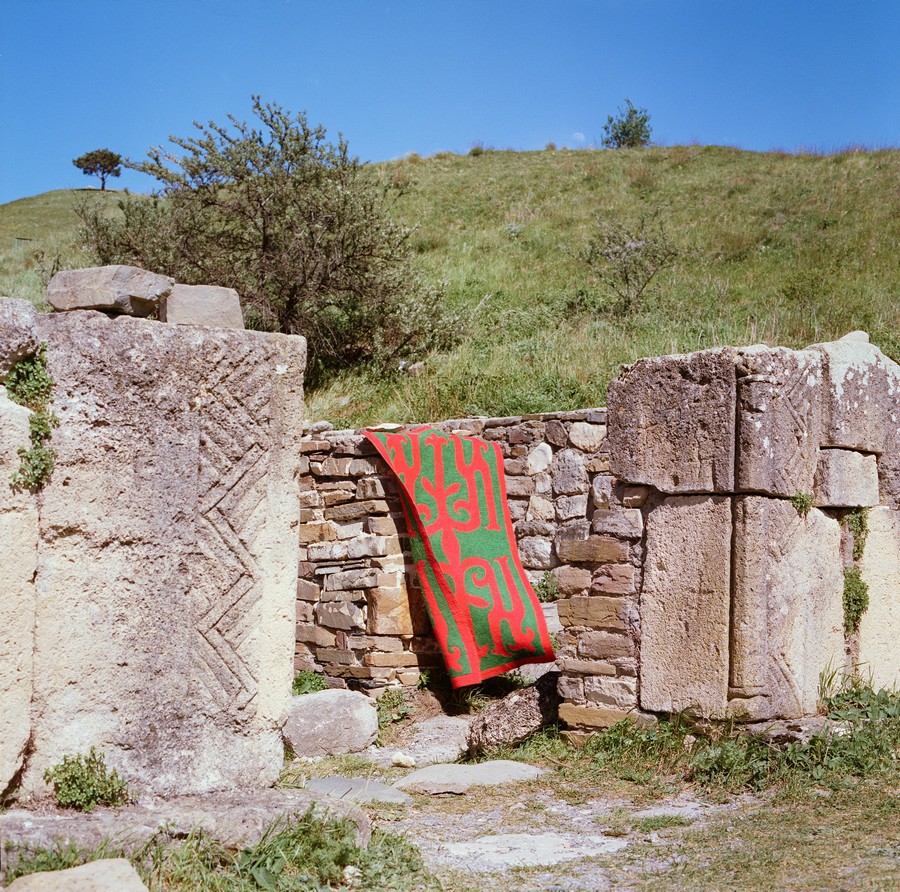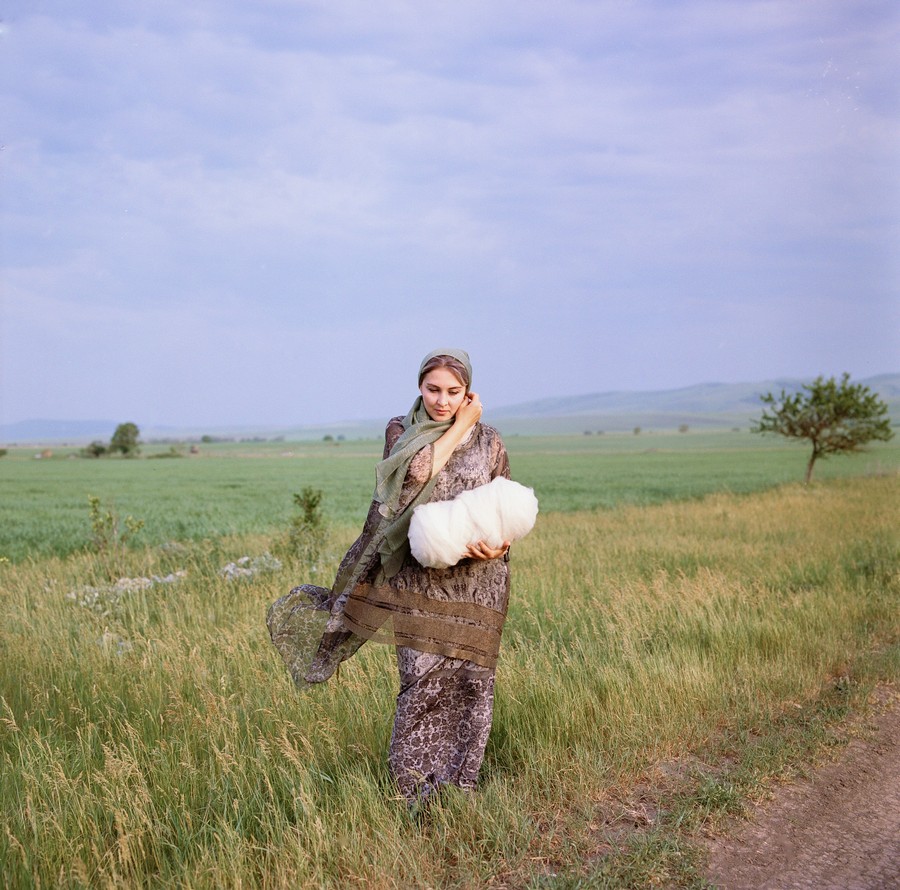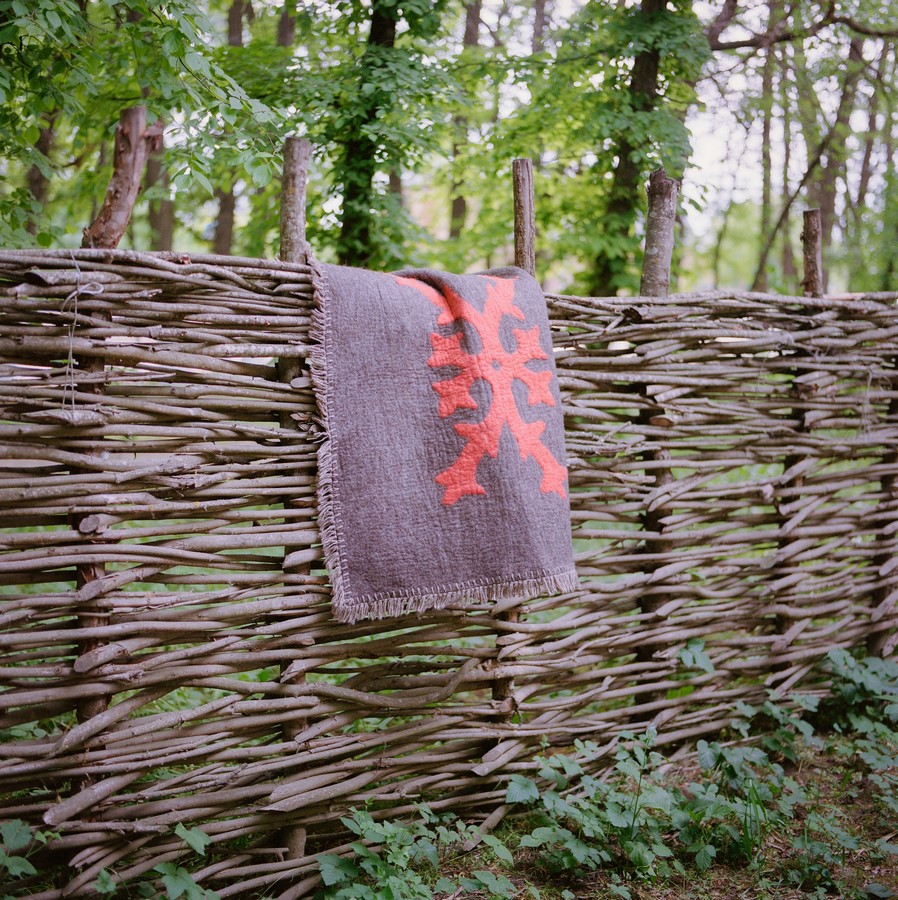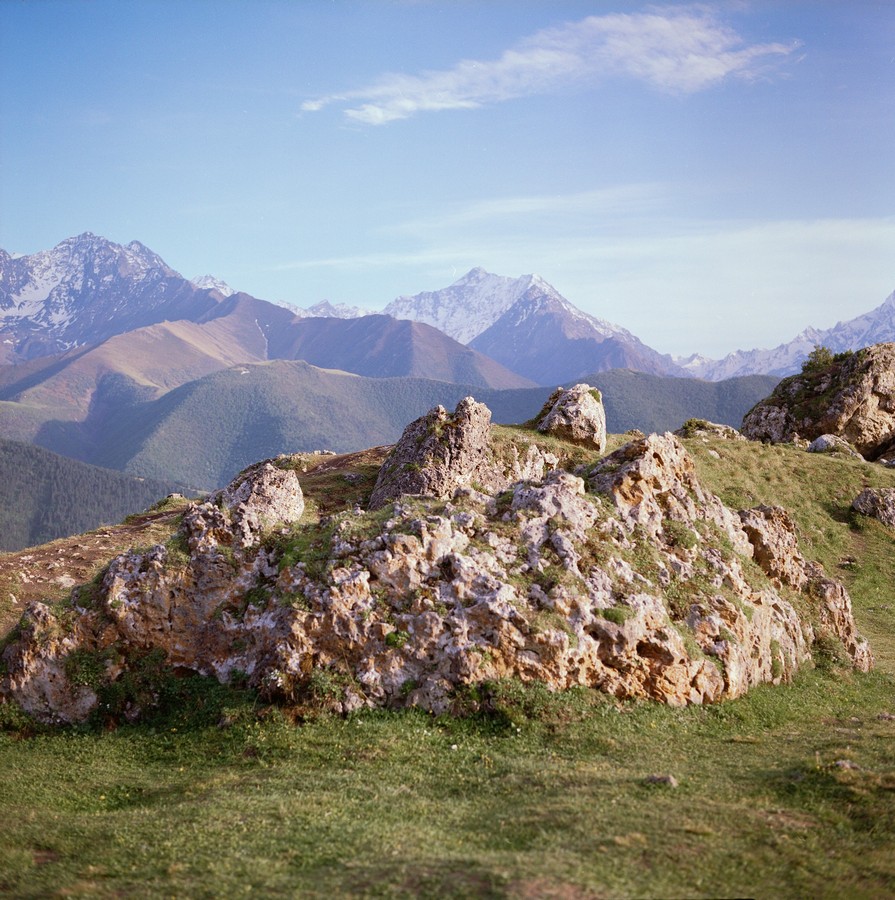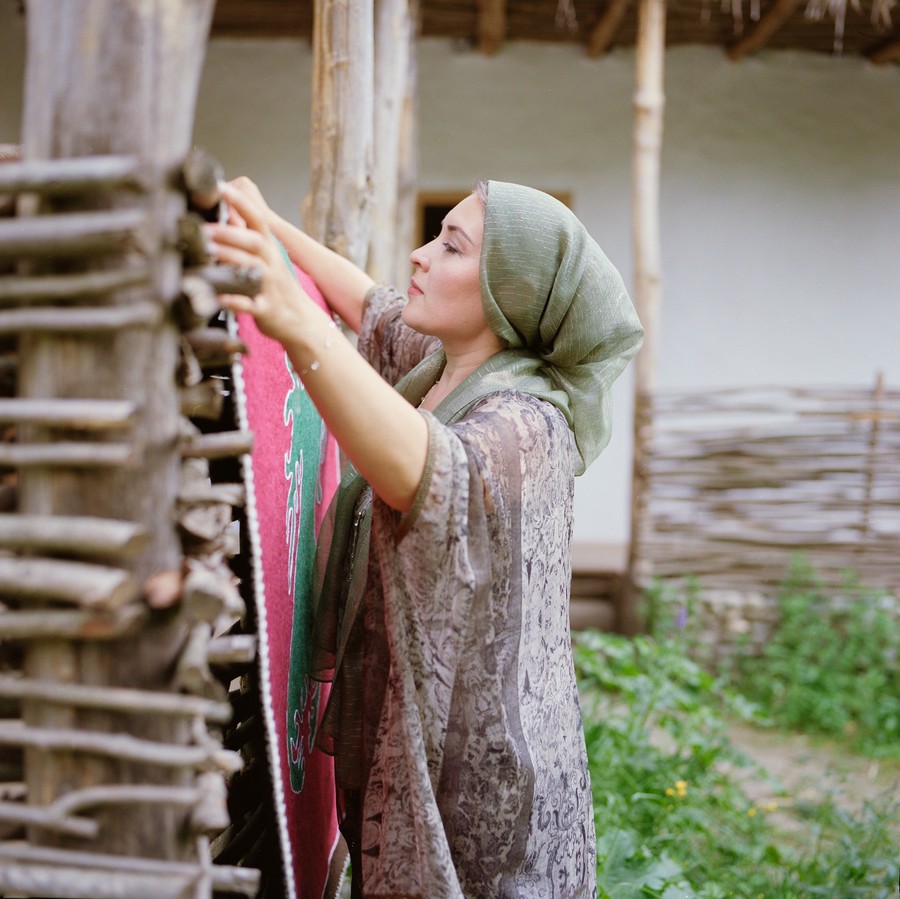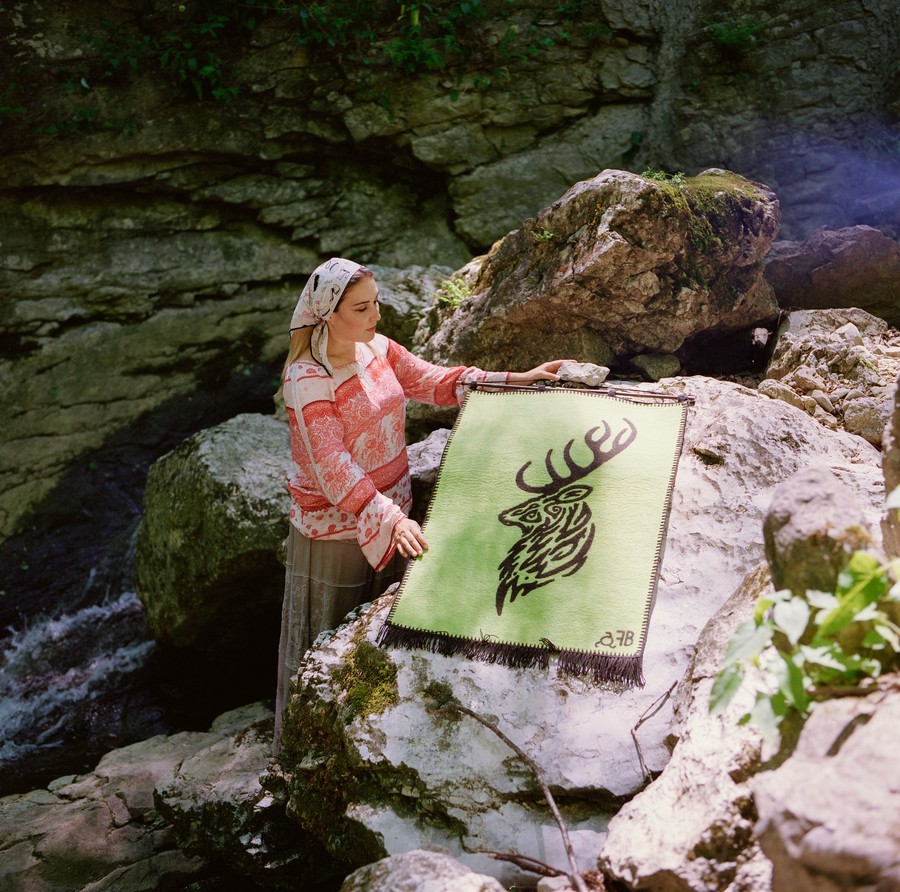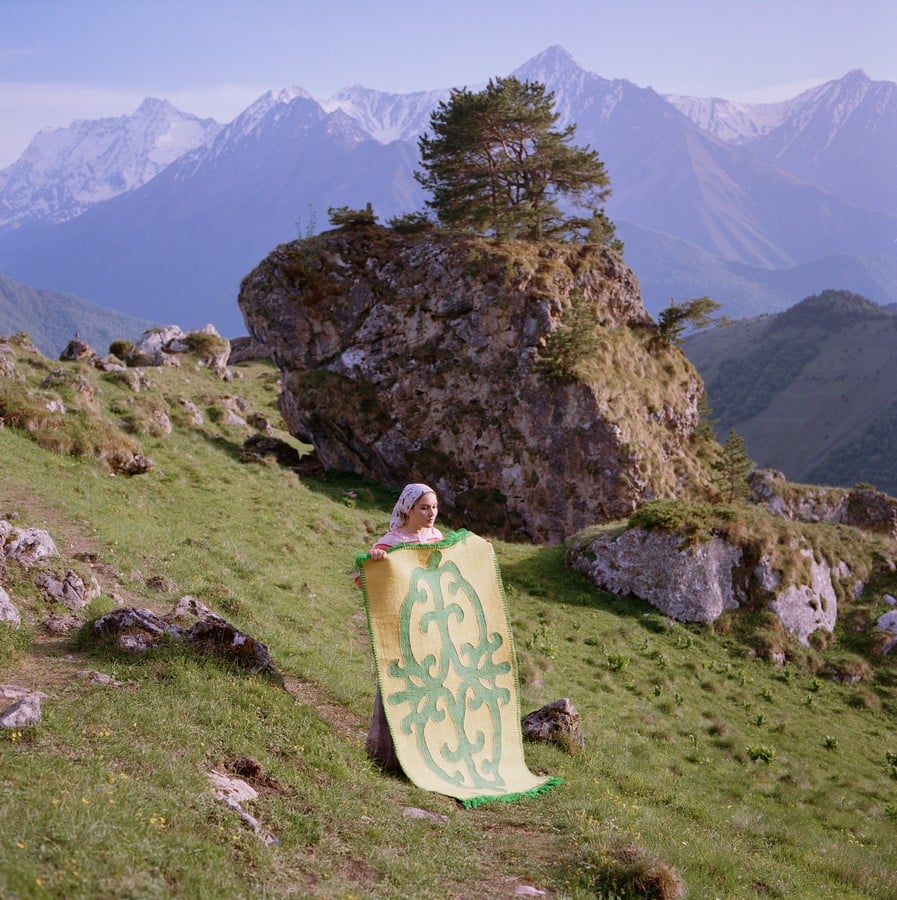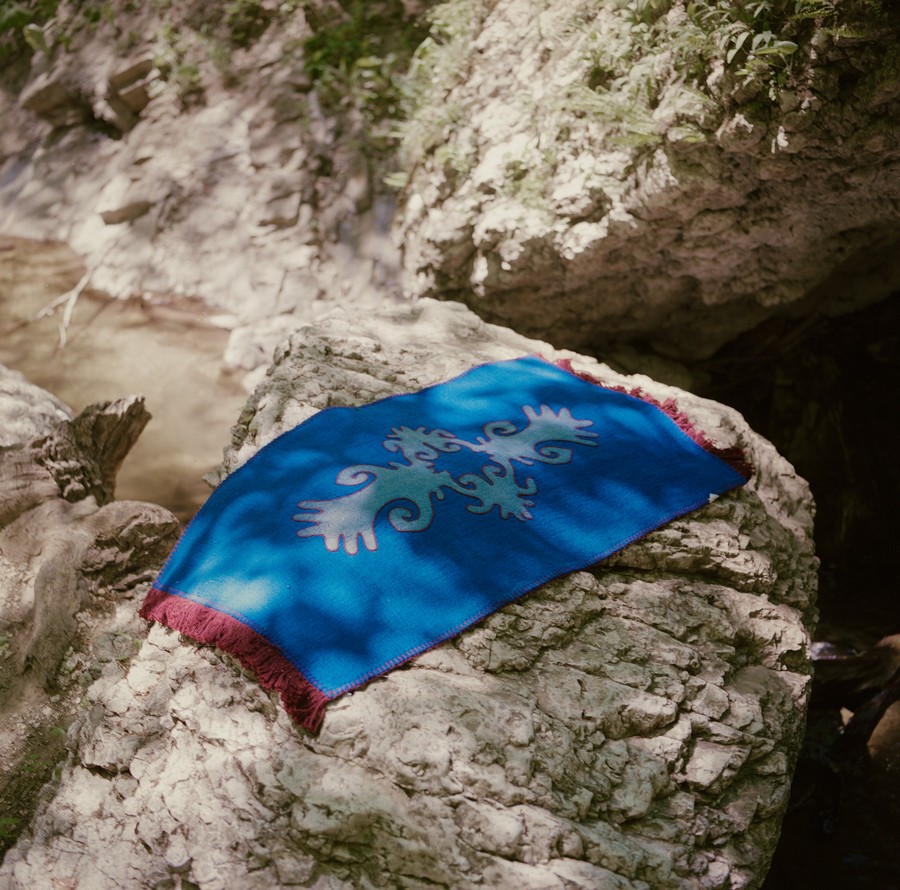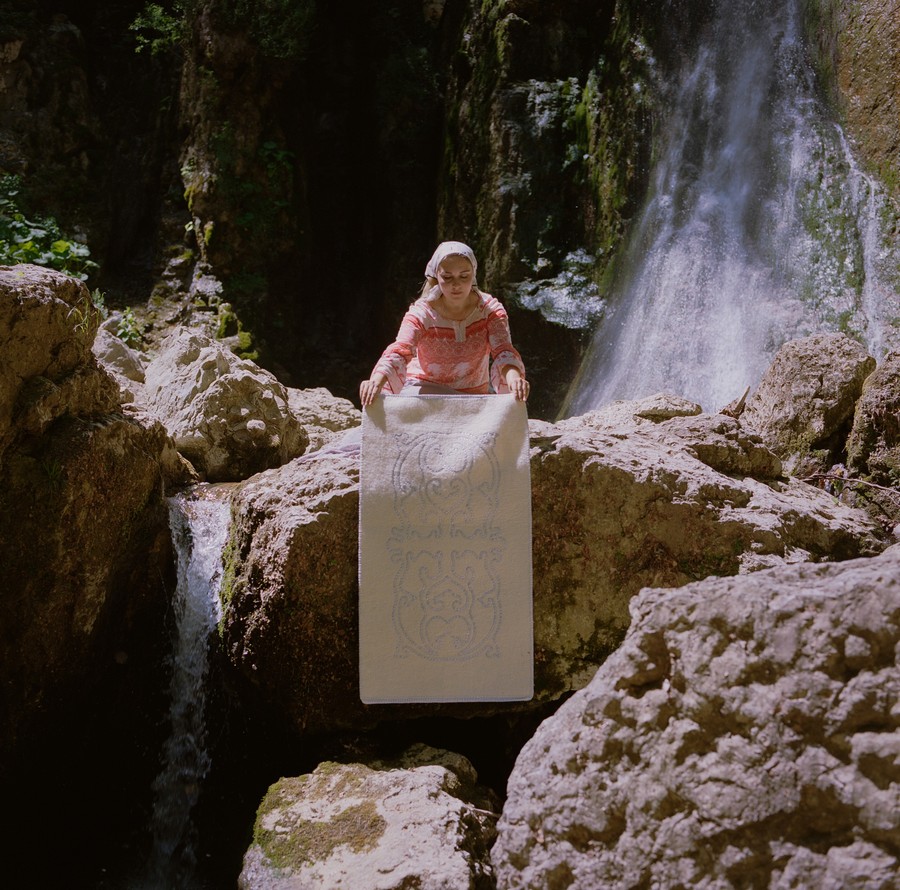In Ingushetia, young women are reclaiming the threads of an ancient artform
Carpet weaving is one of the world’s oldest known art forms. Communities in Ingushetia, a national republic in the Russian Caucasus, have created their own carpet designs through the generations, a tradition that goes back over hundreds of years.
Much of this cultural legacy, however, was wiped out in the Second World War, when Soviet authorities deported the entire Ingush nation to Kazakhstan and Kyrgyzstan in 1944. Plagued by paranoia and convinced that the Ingush people were collaborating with the Nazis, Josef Stalin began forcibly removing ethnic groups from the North Caucasus, emptying not only Ingushetia but Chechnya. The Ingush and Chechen peoples were finally allowed to return from exile in 1957, but many found their homes had been occupied by others.
Now, more than 60 years later, a group of researchers and craftspeople are reviving Ingush carpet-making to help the nation reclaim its traditions and come to terms with its past. Moscow-based photographer Svetlana Bulatova travelled to the region to document their work; over time, that story evolved into a deeper tribute to the extraordinary power of human connections.
Before arriving in Ingushetia, Bulatova worked on a range of documentary projects in the North Caucasus. Initially exploring the environmental aftermath of the Chechen Wars, she spent many years photographing the locals who live among and protect its wildlife areas.
“When you meet people who are totally in love with what they do, it wins you over,” the photographer remarks on meeting the carpet weaving community. In Ingushetia, Bulatova was pleasantly surprised that the protagonists of her story were not only happy to have their photo taken, but also wanted to get involved in its making — volunteering as co-producers and helping with the logistics.
One of Bulatova’s main collaborators was Tanzilla Dzaurova, one of the activists and researchers behind Ingushetia’s carpet making revival. She took an interest in the craft 10 years ago as part of her academic research into local ornaments. Specialising in petroglyphs — ornate and elaborate symbols that can be found on the traditional Ingush fortresses in the mountains — she found that many museums had stopped labelling their artifacts as specifically Ingush, instead referring to them as simply “Caucasian”.
Dzaurova was tracking down untitled artefacts in state and local museums and private collections when she began interviewing elderly carpet makers, many of whom had survived Stalin’s deportations. Thanks to the knowledge they had passed down to her, she founded Dzurdzuki in 2014, an organisation with a mission to revive the Ingush material culture. “For me, it was essential to showcase the female contribution to ingush culture,” Dzaurova says, specifying that carpet-making has traditionally always been a female craft. “The Ingush word for felt — Iisting — has the same root as the ingush word for woman, isti”.
Dzaurova’s research — both into petroglyphs and carpets — proved to be a challenging quest. Testimonies and materials were scarce, so she relied predominantly on field expeditions to far-flung corners of Ingushetia. There, she collected over 500 carpet designs and 370 stone ornaments.
Traditionally, carpets were made for special occasions. Each carpet would have had a message woven into it and was made as a prayer, a blessing, or a protection amulet. During the deportations, the carpets were used for practical purposes: to keep the makeshift houses warm, to swaddle newborn babies, or to exchange for food or other goods.
Only a few carpets made it back home when the Ingush people were allowed to return to their land. The collapse of the USSR and the economic crisis that followed gave the region’s few remaining artisans little chance to practice their skills, as they were forced to pick up other work to survive.
Today, Dzurdzuki is focusing on reviving that legacy with new carpet commissions. The Dzurdzuki Research Centre and the Isting Carpet Studio are seeing more and more local people reconnect with their past and their culture, and this doesn’t just concern artisans.
There’s an increasing trend in individuals and local businesses to purchase carpets to decorate their homes, cafes, and restaurants. Crucially, Dzurdzuki’s initiative is nurturing new craftspeople. They have educated roughly 100 new carpet weavers to keep ingush traditions alive, including many teenage girls. In rural areas of Ingushetia, carpet making is one of the few decently paid job opportunities for women. “Carpet making is hard labour, but local women enjoy it,” says Dzaurova. “It might have something to do with genetic memory. It’s a way these women can reestablish bonds with their grandmothers, who once worked with wool for generations. Something about working with wool again might have prompted us to realise how much we actually missed it in our lives.”
Bulatova also noticed the kinship that carpet making kindled in the community. “I noticed the way that locals handle and caress the soft wool with the palm of their hand, as if wanting to soak in all its warmth,” she says. “[It was] a simple gesture that manifests their awe and respect for the people who make the carpets.”
Dzaurova believes that natural wool carpets have healing properties that cannot be found in synthetic products, which are common today. “We need to surround ourselves with more natural materials,” she says. Sustainability has been essential to Dzurdzuki: “We make carpets with deep respect not only for our heritage, but for our nature. We use wool sourced from the local sheep without harming them or the environment.” In her spare time, Dzaurova volunteers as part of a group that has planted more than 1,000 trees in Ingushetia, hoping to restore an ecosystem harmed by decades of conflict and industrialisation. “No one can save us but ourselves. We plant trees alongside rivers to slow down the water that disappears too fast if it is not stopped by the roots of the trees on the banks,” she explains.
This dedication, care, and respect Dzaurova shows for the local craft is captured in a portrait where she is shown cradling a reel of wool, while a storm unfolds above her, high up in the mountains. Describing this very moment, she says: “The wind grew strong, bending the grass so it was touching the soil. I saw the mountains rise in the distance as we drove along a serpentine road. Golden hour had arrived in the valley and, instantly, everything was illuminated. Ever since I arrived in Ingushetia, I had been desperate to find the right shot that would capture wool for its strength and gentleness, something I consider a key element of the story” Bulatova remembers. “All worked out in time.”
All images for this story were commissioned by Takie Dela, a Russian media outlet that supports Russian charities and NGOs by producing compelling, empowering stories from across the country that help to raise awareness and fundraise their work.
